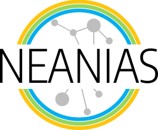The Inter-University Institute for Data Intensive and the Astronomy Department at the University of Cape Town (UCT) has hosted Dr Ugo Becciani from the Catania Astrophysical Observatory, Italian Institute of Astrophysics (INAF) in Catania (Sicily), on 25/02/2020.
As part of the visit, Dr. Becciani gave a talk at the UCT entitled “Towards Astronomical Big Data Analysis – Visual Analytics, Machine Learning and Future Perspectives at Catania Astrophysical Observatory “.
The Inter-university Institute for Data Intensive Astronomy is a partnership of three South African universities, the Universities of Cape Town, of the Western Cape and of Pretoria. IDIA also has an industry partner in SAP. The overarching goal of IDIA is to build within the South African university research community the capacity and expertise in data intensive research to enable global leadership on MeerKAT large survey science projects and large projects on other SKA pathfinder telescopes, leading to leadership on SKA phase 1 Key Science programs. One of the first elements to reach this goal was for IDIA to set up a data-intensive research cloud facility to service its scientific community. Currently, IDIA is the primary platform to service five out of eight MeerKAT large survey projects.
Catania Astrophysical Observatory (OACT), part of the Italian National Institute for Astrophysics (INAF), hosts a group of computer scientists and astrophysicists involved in the development of the Square Kilometre Array (SKA) as well as in the scientific exploitation of SKA precursors such as MeerKAT and ASKAP. iNAF's ICT research group is one of the most active within INAF in the areas of development and deployment of High-Performance Numerical Codes, Visual Analytics and Data Analysis tools.
Recently, and in view of our Big Data theme, we started working on the application of Machine Learning applied to ASKAP surveys and initiated a collaboration with the University of Malta to use machine learning for the detection of compact radio sources. Our research group has developed a new source finder, named Caesar, which has been used in the context of the ASKAP EMU survey to tackle these challenges. Post-processing tools, exploiting machine learning techniques, are currently being designed to complement Caesar source extraction capabilities in the area of spurious source identification and source classification.
At the same time, we started our activity in an H2020 project NEANIAS where we lead the Astrophysical community to develop services for Data Management and Visualization for complex images data and metadata. VisIVO is an innovative framework that offers a unique integrated ecosystem for data exploration, visualization and visual analytics operations. It includes mobile and desktop applications and services for collaboration using science gateway technologies.
The aim of the seminar is to open up new research collaborations with South African scientists and discuss some of the exciting job opportunities in store for graduate students who may wish to join our research team.
Read more at Inter-university Institute for Data Intensive Astronomy.
